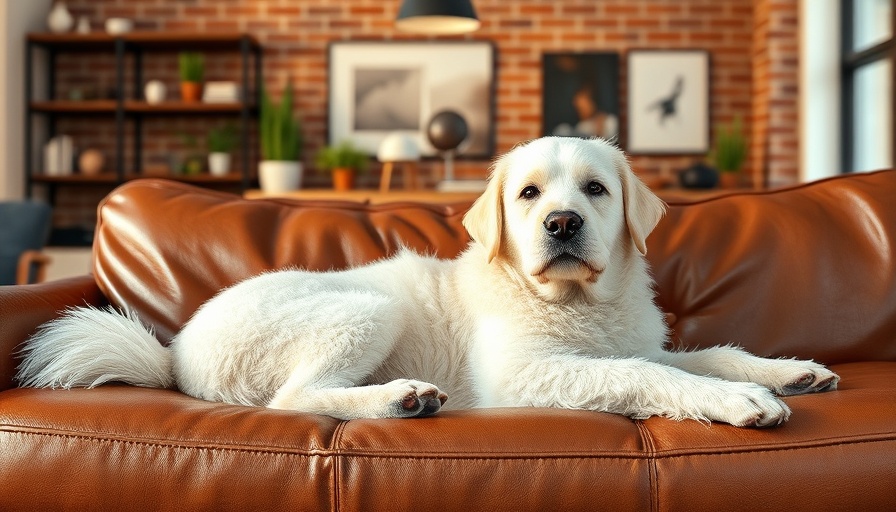
Why Dogs Love the Couch
Understanding your furry friend’s motivations can be the first step in managing their behavior. Dogs often climb onto the couch for a multitude of reasons: they seek warmth, comfort, or simply want to be close to their favorite humans. A cozy couch naturally resembles a dog bed, especially if it's plush and inviting. Additionally, dogs are social creatures and often mirror the actions of their owners or companions, especially children, who may jump and play on furniture. This desire to emulate behavior can lead to your dog frequently commandeering the couch!
Three Tried-and-True Strategies
To help maintain your couch’s integrity and your sanity, here are some time-tested strategies to keep your dog at bay:
1. Crate Training
Crate training is an invaluable strategy for any dog owner. This method helps your dog feel secure in their own personal space, thereby reducing their urge to invade other areas of the house, particularly your cherished couch. Ideally, crate training should begin from puppyhood, as dogs who grow accustomed to their crates from an early age are less likely to view them as punishment. Instead, they learn to see their crate as a safe haven where they can relax and unwind.
2. The Power of the "Off" Command
Incorporating command training into your dog’s routine is another effective method. The 'off' command specifically can be quite powerful. Start teaching your pup the basic commands at around eight weeks of age; this sets the foundation for more advanced commands later, like “off.” Reward them with treats when they respond correctly to your commands. This positive reinforcement encourages them to respect boundaries and reinforces good behavior.
3. Provide a Cozy Alternative
Finally, if your dog is drawn to the couch due to its coziness, consider providing a comfortable dog bed. The right sleep surface can significantly affect your dog’s choice of resting spot. Research beds that suit your dog's size and preferences; for instance, a raised metal frame could serve well for aggressive chewers, while a memory foam bed can be a haven for older dogs, offering them the support they need. This way, they have their dedicated comfy space, keeping them off your couch.
Understanding Behavioral Patterns
It’s not uncommon for pet owners to feel overwhelmed by their dog's couch-surfing antics. Attempting to change a dog's cushions-hopping ways may require patience and consistency over time. Behaviorists often point out that understanding the underlying reasons for your dog's choices is as crucial as implementing training approaches.
Embracing Product Solutions
In addition to training methods, consider exploring the plethora of products on the market designed specifically to discourage couch lounging. Couch covers, dog barriers, and double-sided tape are all popular choices. Products like pet repellent spray (safe for dogs) or even furniture-specific deterrents can aid in curbing undesired behavior. Similarly, creating a designated dog zone within your living environment can give your dog a space to call their own while keeping your furniture intact!
Actionable Insights: Setting Boundaries
Ultimately, providing your dog with boundaries is essential for a harmonious living arrangement. Clear guidelines and consistent cues will not only benefit your home but also strengthen the bond between you and your dog. Remember that training and discipline should be approached with kindness, patience, and laughter, ensuring a positive experience for both you and your canine companion.
 Add Row
Add Row  Add
Add 


Write A Comment